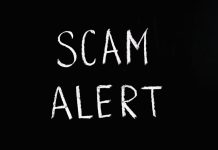In this modern-day and age where almost each and every form of content is available over the internet, everything is capable, and vulnerable, of being taken.
Hacking entails skill and expertise, but stealing content and branding it as your own doesn’t take that much brain.
Protecting the content you post is essential, and the Digital Millennium Copyright Act (DMCA) is an easily accessible solution for those victims of copyright infringement.
What is the DCMA?

The Digital Millennium Copyright Act (DMCA) came into effect in October of 1998. This law of the United States penalizes the infringement of digital work, in addition to the production and distribution of software designed to infringe digital rights, such as scripts and bots.
The law also outlines safe harbors for several online service providers, including internet services, from penalties arising from copyright infringement.
Basically, DMCA protects the rights of your digital work, preventing it from getting stolen. If anyone plagiarizes, thieves, or takes credit for your original work, then DMCA can help take them down.
However, there are numerous cases of DMCA abuse. While it may be a helpful tool in combating intellectual property theft, the DMCA to this day remains a controversial double-edged sword.
How Does DMCA Work?
If you are the creator of any digital content, images, audios, videos, texts, art, then it rightfully belongs to you. That is the basic tenet of DMCA.
If you find your work uploaded to a site without authorization from you, the original creator, then you can file a DMCA take-down notice to the internet service provider hosting the site.
There are numerous DMCA take-down services to help you file your notice and take down the stolen content.
Regularly scouring the inter-webs for illegal and unauthorized use of your work, or taking steps to be credited for the work, or have it removed entirely, is essential.
Limitations of DMCA
However, the DMCA does not apply to things such as names, brands, trademarks, ideas, and looks. And because it is the law of the United States, it will not apply to sites whose servers are outside the country.
Needless to say, though, there are laws equivalent to the DMCA in other nations. They have their own regulations on fair use of intellectual property.
Furthermore, if what those who took your content did falls under the fair use policy, then you cannot file a DMCA complaint. The fair use policy is a US law that allows the limited use of copyrighted material, even without acquiring authorization from owners or creators.
Fair use allows others to take your content even without your permission, provided their purposes fall under the fair use policy.
The DMCA also provides safe harbors to specific industries, such as internet service providers and file sharing sites, those that encourage the uploading and publishing of content.
Even so, their safe harbor status does not mean that they are under no obligation whatsoever. Upon notice, they are still required to take down any content that infringes the rights of the original owner.
What are the ways to DMCA proof a site?
1# The DMCA Notice
DMCA is relatively accessible; anybody can use the DMCA takedown services. It is free of charge and legal fees, easy to follow, and the results are quick.
The DMCA applies to any online content that can be stolen and does not whose purposes does not fall under fair use. Even without registered copyright, the DMCA notice has an effect.
A DMCA takedown notice is a document sent to a company, usually an online provider, telling them that they are hosting infringed content and request them to take it down.
2# The Badge
To be clear, DMCA provides no preemptive protection; it only applies after your content has been stolen. There is one way, though, to warn people and potentially discourage them from plagiarizing content.
Opt for getting a DMCA badge for your website. Among other perks offered by the badge is a free professional takedown per year by the DMCA website itself.
The DMCA badge and certificate show that the site is protected by the DMCA website and indexed in their database as a guarded site.
The badge and the notice are the prime ways to DMCA-proof your site from potential perpetrators. How about the other way around? How will a website be safe from being issued a DMCA case?
3# Be Safe From DMCA Through Harbors
Safe harbor provisions shield sites from liability. Protect yourself from copyright infringement claims by setting up effective takedown procedures. If you receive notices, you will act swiftly to take down the work in question.
Another provision states that an online service provider would not be liable for linking sites that have infringed content, but they did not know of that fact. Furthermore, materials posted by a user of your website in the comment threads are not covered by DMCA.
One final provision states that the site is not liable for any monetary damages as long as the administrator acts in good faith, i.e., has no actual or constructive knowledge of infringement, did not receive any financial benefit from the activity, and the administrator moves quickly to remove the infringing material once knowledge of its infringement is known.
4# Be Safe From DMCA Through The Obvious
A few simple steps can go a long way in avoiding you the headache of a lawsuit. Don’t steal other’s content. If you have to use it though, do so within fair use, or better yet, ask permission.
Research. Fair use policies differ for each type of content, and there are more factors to consider upon the addition of platforms. Before using content, know if you are infringing some right related to fair use.
Check out how TTD EYE brands its photos on each graphic item. It is another way of copyrighting or protecting yourself from DMCA, put your brand on the item.
5# Be Safe From DMCA Through Counter-Notice
If you receive a notice, but your content is not infringing upon anything, consult legal advice and issue a counter-notice.
If after its issuance, the other party does not take action within ten days, the service provider is bound to restore the content removed.
Wrap Up
There are minimal ways to prevent content from being stolen; after all, it is up to the user if he wants to infringe or not. But DMCA is the one remedy that makes it easy for owners to combat the unauthorized usage of their work.
Filing it is accessible, and the process is easy, so if you see your work unfairly grabbed by some other site, then go ahead.
If you are a site owner, though, take care not to infringe on other people’s rights and benefit from work that you did not do.
Author Bio: Lydia Lee














